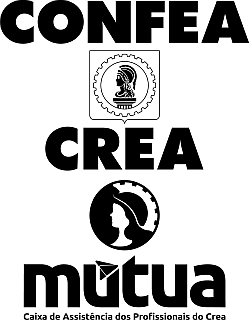Estudo de desempenho à fadiga de base cimentada tipo BGTC na BR-101/SE
DOI:
https://doi.org/10.14295/transportes.v26i1.1358Keywords:
Cemented crushed stone, Accumulated damage, Shift factor.Abstract
The increase of stiffness to the pavement afford usual application of the cemented crushed stone (CCS) for the new pavements designs in Brazil. The increase of overall pavement stiffness reveals an advantage for high volume roads, can applied as a base or subbase, that is, in semi-rigid and inverted semi-rigid pavements, respectively. Perhaps, the major disadvantage of the CCS is its weak fatigue cracking process, which often causes accelerated damage to the pavement structure. On the present research, the fatigue life was determined in laboratory and calibrated with a laboratory-field factor extracted from the monitoring of the structural performance of the monitored section in BR-101/SE, by applying the cumulative damage principle of Hypothesis of Miner. It was also monitored and determined the evolution of the damage caused by the traffic action, as well as its influence in reducing the rigidity of this material over time, for a period of thirty-six months, which allowed calibrating a model that relates the rigidity of the layer to the accumulated damage.Downloads
References
AASHTO (2014) Guide for Mechanistic-empirical Design of New and Rehabilitated Pavement Structures, NCHRP 1-37A. Washington, DC: Transportation Research Board.
ASTM (2015). Standard Test Method for Flexural Strength of Concrete (Using Simple Beam with Third-Point Loading) ASTM C78/C78M-15a. 4p. DOI: 10.1520/C0078_C0078M-15B.
AS 1012, Australian Standard (2000) Testing Concrete. Standards Australia, Sydney.
AUSTROADS (2004) Pavement Design – A Guide to the Structural Design of Road Pavements. AUSTROADS.
De Andrade, L. R.; A. K. Kuchiishi; I. S. Bessa; K. L. Vasconcelos; L. L. B. Bernucci; I. A. Beja; J. M. Chaves (2015) Comportamento mecânico de camadas de bases granular e tratada com cimento em rodovia de tráfego muito pesado. Anais do XXIX Con-gresso de Pesquisa e Ensino em Transportes, ANPET, Ouro Preto, p. 148 – 159.
DNER-ME 83 (1998). Agregados – Análise Granulométrica. Departamento Nacional de Estradas de Rodagem – Método de Ensaio, Rio de Janeiro, RJ, Brasil.
DNIT. (2010) ME 133/2010 Pavimentação asfáltica – Delineamento da linha de influência longitudinal da bacia de deformação por intermédio da Viga Benkelman -Método de Ensaio. Rio de Janeiro- RJ, 2010.
Franco, F. A. (2007) Método de Dimensionamento Mecanístico-empírico de Pavimentos Asfálticos – SISPAV.. Tese (Doutorado) - Coordenação dos Programas de Pós-graduação de Engenharia, Universidade Federal do Rio de Janeiro. Universidade Fe-deral do Rio de Janeiro. Rio de Janeiro, RJ.
Gnanendran, C. T. e K. P. Dalim (2016) Fatigue Characterization of Lightly Cementitiously Stabilized Granular Base Materials Using Flexural Testing. Journal of Materials in Civil Engineering, v. 28, n. 9, p. 04016086. DOI: 10.1061/ (ASCE) MT.1943-5533.0001598
Jitsangiam, Peerapong et al (2016) Fatigue Assessment of Cement-Treated Base for Roads: An Examination of Beam-Fatigue Tests. Journal of Materials in Civil Engineering, v. 28, n. 10, p. 04016095. DOI: 10.1061/ (ASCE) MT.1943-5533.0001601
Mendonça, A. T. de (2014) Avaliações Funcionais e Estruturais Preliminares de Trechos Monitorados na Rodovia BR-101/SE. Dissertação (Mestrado) — Universidade Federal de Sergipe, São Cristóvão.
Nascimento, R. S. (2017) Estudo de Desempenho à Fadiga de Base Cimentada Tipo BGTC na BR-101/SE. Dissertação (Mestrado) — Universidade Federal de Sergipe, São Cristóvão.
SAPEM, South African Pavement Engineering Manual (2014). South African National Roads Agency Ltd.
Park, Sun e Y. Kim (1997) Temperature correction of back calculated moduli and deflections using linear viscoelasticity and time-temperature superposition. Transportation Research Record: Journal of the Transportation Research Board, n. 1570, p. p. 108-117. DOI: 10.3141/1570-13
Piratheepan, J. e C. T. Gnanendran (2012) Back-calculation of resilient modulus of lightly stabilized granular base materials from cyclic load testing facility. Journal of Materials in Civil Engineering, v. 25, n. 8, p. 1068-1076. DOI: 10.1061/ (ASCE) MT.1943-5533.0000653
Theyse, H.; M. De Beer e F. Rust (1996) Overview of South African mechanistic pavement design method. Transportation Research Record: Journal of the Transportation Research Board, n. 1539, p. 6-17. DOI: 10.3141/1539-02
Yeo, R. (2008) The development and evaluation of protocols for the laboratory characterization of cemented materials.
Downloads
Published
How to Cite
Issue
Section
License
Authors who submit papers for publication by TRANSPORTES agree to the following terms:
- The authors retain the copyright and grant Transportes the right of first publication of the manuscript, without any financial charge, and waive any other remuneration for its publication by ANPET.
- Upon publication by Transportes, the manuscript is automatically licensed under the Creative Commons License CC BY 4.0 license. This license permits the work to be shared with proper attribution to the authors and its original publication in this journal.
- Authors are authorized to enter into additional separate contracts for the non-exclusive distribution of the version of the manuscript published in this journal (e.g., publishing in an institutional repository or as a book chapter), with recognition of the initial publication in this journal, provided that such a contract does not imply an endorsement of the content of the manuscript or the new medium by ANPET.
- Authors are permitted and encouraged to publish and distribute their work online (e.g., in institutional repositories or on their personal websites) after the editorial process is complete. As Transportes provides open access to all published issues, authors are encouraged to use links to the DOI of their article in these cases.
- Authors guarantee that they have obtained the necessary authorization from their employers for the transfer of rights under this agreement, if these employers hold any copyright over the manuscript. Additionally, authors assume all responsibility for any copyright infringements by these employers, releasing ANPET and Transportes from any responsibility in this regard.
- Authors assume full responsibility for the content of the manuscript, including the necessary and appropriate authorizations for the disclosure of collected data and obtained results, releasing ANPET and Transportes from any responsibility in this regard.










